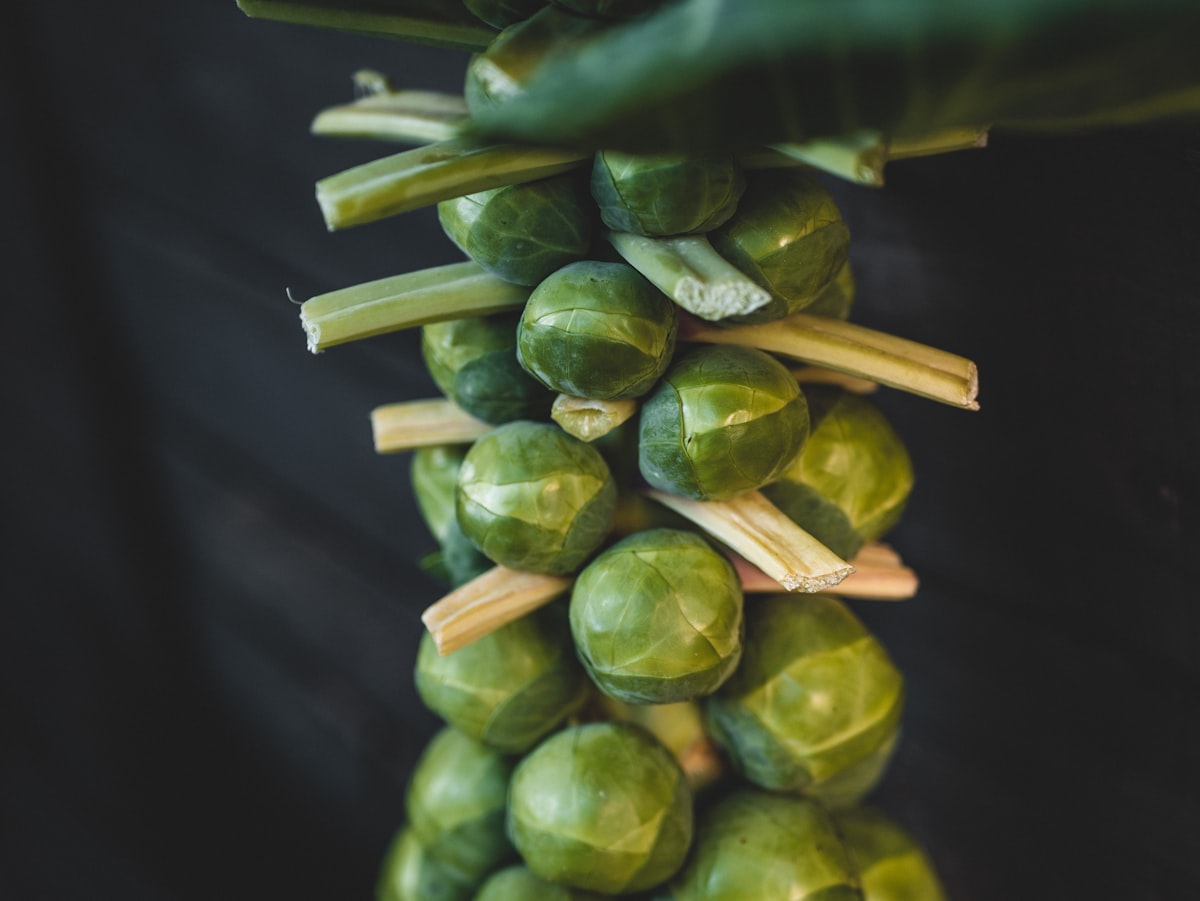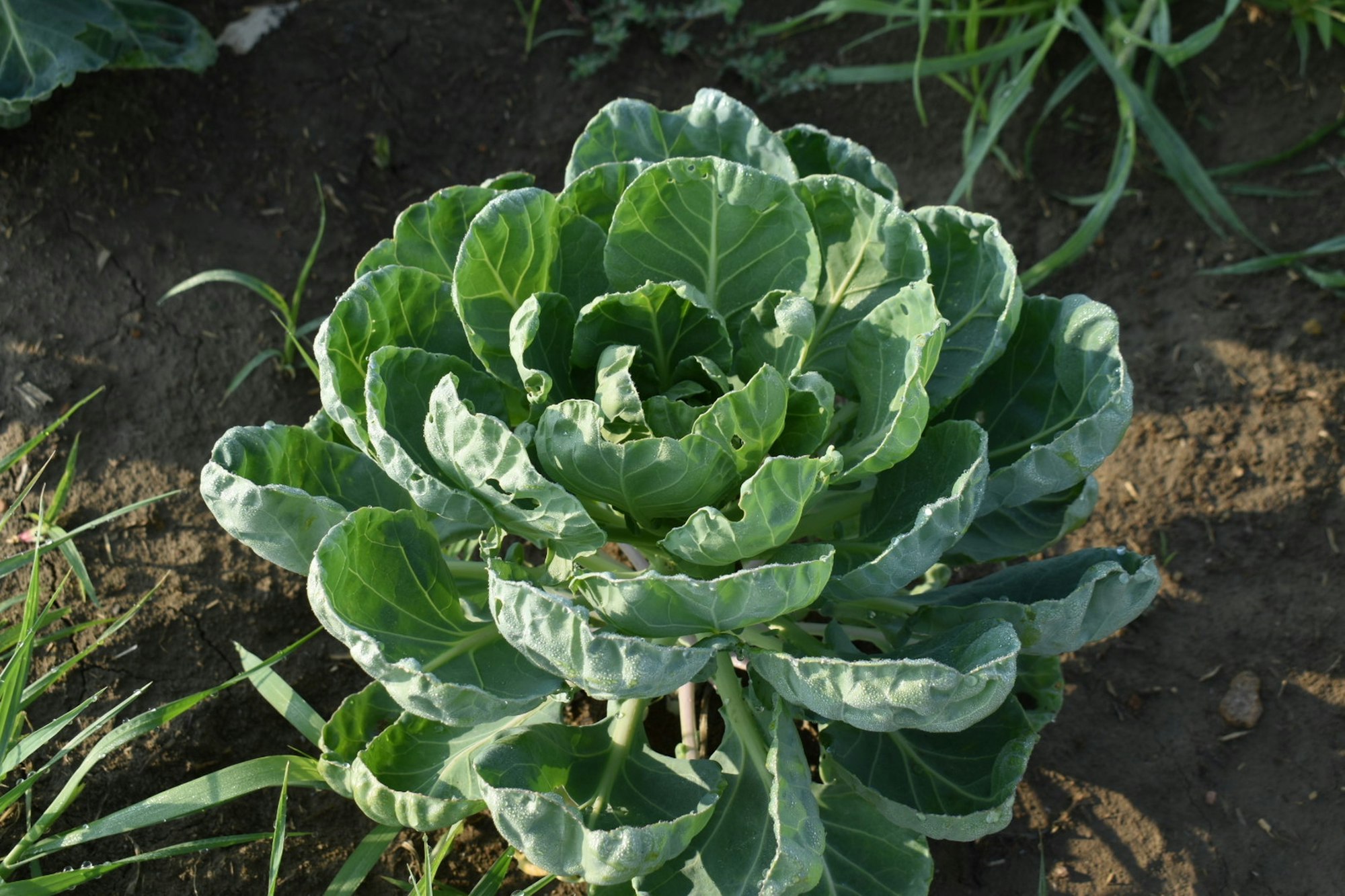How to Grow Brussels Sprouts
Brussels sprouts, the cool-weather crop widely known for their high nutritional value, can be a fantastic addition to your home garden.

Table of Contents
These small, cabbage-like buds grow on tall stalks and can thrive in various climates, making them a versatile and rewarding choice for gardeners of all skill levels.
To grow flourishing Brussels sprouts, it is essential to understand the basics of ideal planting conditions, soil preparation, and timing.
When properly nurtured, these plants will reward you with a bountiful harvest, enriching your meals with their unique taste and abundant health benefits.
About Brussels Sprouts
Brussels sprouts are a nutritious and versatile vegetable belonging to the Brassica family, closely related to cabbage, broccoli, and kale.
Scientifically known as Brassica oleracea var. gemmifera, these mini cabbages grow in a helical pattern along the main stalk and are usually harvested when they reach about an inch in diameter.
Brussels sprouts are considered a biennial plant, though they are typically grown annually in most gardens.
They thrive in cooler temperatures, between 60-65°F (15-18°C), making them an ideal cool-season vegetable to grow in raised beds and gardens that receive 6 to 8 hours of direct sunlight daily.
Proper care and maintenance, such as regular watering and the application of high-nitrogen fertilizer, can help ensure a successful harvest of these nutrient-dense sprouts.
Growing Brussels Sprouts
To start planting Brussels sprouts, ensure your garden soil is well-draining and has a pH level of neutral to slightly alkaline or slightly acidic.
Sow seeds directly into the ground or containers by gently pressing them into a moist seed-starting mix about ½ inch deep.
Germination typically occurs between 45 and 85 degrees Fahrenheit.
Choose a location with full sun exposure and space the rows 6 inches apart. If transplanting seedlings, place them 15 to 18 inches apart in rows spaced 36 inches apart.
Be sure to provide regular water and high-nitrogen vegetable fertilizer to support their growth.
Plant seedlings for a fall or early winter harvest in early spring or mid to late summer.

Caring for Brussels Sprouts
Sun and Temperature
Brussels sprouts thrive in cool weather, with the ideal temperature around 60-65°F (15-18°C).
Ensure your plants receive full sun, about 6 hours of sunlight daily.
Water and Humidity
Keep the soil consistently moist but avoid overwatering to prevent root rot.
Providing about 1 to 1.5 inches of water per week, especially during the long growing season, ensures healthy growth.
Soil
Choose a well-drained soil with a pH between 6 and 6.8 for optimal growth.
Incorporate compost or well-rotted manure to enrich the soil and improve its structure, making it easier for the plants to take up nutrients.
Fertilizing
Feed your Brussels sprouts with a nitrogen-rich fertilizer during the growing season.
Balancing other nutrients, such as potassium and iron, is crucial for their overall health and development.
Pruning and Propagation
Regularly prune lower leaves, helping the plant focus its energy on sprout production.
Additionally, removing any damaged leaves or debris from the base of the plant helps protect against pests and diseases.
Troubleshooting Plant Problems
Growing Problems
When growing Brussels sprouts, providing proper space between plants is crucial to prevent diseases and pests from spreading.
Ensure your plants have enough space from the start, even if you begin the seedlings indoors.
Additionally, it is possible for seeds to rot or for seedlings to have bluish-black spots and fail to grow; carefully monitoring your plants will help you catch these problems early on.
Pests and Diseases
Several pests and diseases can affect Brussels sprouts, including aphids, cutworms, leaf miners, nematodes, snails, and slugs.
To protect your crop, consider using a collar around young plants to ward off cutworms and a net or row cover over the crop to mitigate damage from flying insects.
Crop rotation also helps avoid insect larvae living in the soil and feeding on foliage and roots.
Companion Planting
Brussels sprouts can benefit from companion planting.
Helpful companion plants can deter unwanted pests and improve your crop's overall health.
Remember that certain plants should not be planted near Brussels sprouts.
When planning your garden, research compatible plant pairings to enhance your plants' growing season and increase the likelihood of a successful harvest.
Conclusion
Growing your Brussels sprouts can be a rewarding experience as you enjoy delicious and nutritious homegrown produce.
These cool-weather-loving plants thrive in temperatures between 60-65°F (15-18°C) and require full sun exposure for at least 6 to 8 hours daily.
By starting your seeds indoors in early April and transplanting them to well-draining, moderately fertile soil, you're setting your sprouts up for success.
Don't forget to provide regular water and high-nitrogen vegetable fertilizer to help your plants flourish.
Ultimately, you'll benefit from a tasty and healthy harvest packed with vitamins, making all your efforts worthwhile.
Frequently Asked Questions
When is the best time to plant Brussels sprouts?
Brussels sprouts thrive in cool weather, generally in early spring or autumn. Aim to plant them 80 to 110 days before the first frost for optimal growth.
What is the ideal growing environment for Brussels sprouts?
These plants require full sun exposure and well-drained soil with a neutral pH to slightly alkaline or acidic. Ensure daytime temperatures stay below 80ºF (27ºC) and nighttime temperatures are even lower for best results.
How can I propagate Brussels sprouts from seeds indoors?
Gently press seeds into a moist seed-starting mix in a container. Keep the soil moist but not soggy, and place the container in a warm spot with bright, indirect light to promote germination.
What are some tips for planting Brussels sprouts in specific zones?
While Brussels sprouts can be grown in nearly any USDA Zone, planting time per zone may vary. Consult the USDA Zone guidelines and local planting calendars to find your area's ideal planting time.
How long does it take for Brussels sprouts to mature fully?
Brussels sprouts generally require 80 to 110 days to mature, depending on the variety. During this time, ensure proper care and growing conditions for a healthy, productive harvest.
Do Brussels sprouts return every year or need replanting?
Brussels sprouts are biennial plants that are typically grown annually in most gardens. They do not return yearly, so you must plant new seeds or seedlings each season for a fresh harvest.


